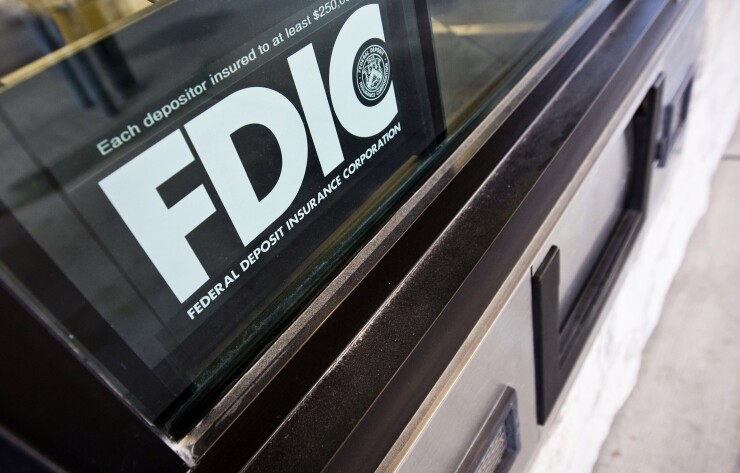
Today's
The magnitude of the Federal Deposit Insurance Corp.'s loss in the First Republic failure will become clearer as it sells or collects on the loans and investments not assumed by JPMorgan Chase. Ultimately, the FDIC's loss will be the difference between what it is paying JPMorgan to assume all of the bank's deposits and what it nets in liquidating the bank's remaining assets and those liabilities not assumed by JPMorgan.
Whatever the FDIC's ultimate loss, the clear implication is that the $250,000 deposit insurance limit is now a dead letter for large banks and should be for all banks. The notion that large depositors should rush to withdraw their deposits from a bank when they sense that it might fail — so-called depositor discipline — has about as much therapeutic value in deterring reckless banking as the long-abandoned medical practice of bloodletting had in ridding human bodies of disease.
Bank runs are hardly therapeutic — instead, they merely drive a troubled bank deeper underwater, ensuring not only its failure, but also causing incalculable damage to many of the bank's borrowers. Especially harmed are businesses with lines of credit that get canceled when a bank is suddenly closed, forcing the borrower to scramble to find a replacement line of credit at another bank.
Not only might such a business not survive, but its failure could harm its community, spreading the pain of the bank's failure to innocent parties, a point Jimmy Stewart made so poignantly in that famous banking movie, "It's a Wonderful Life."
Although it never said so publicly, the FDIC has, as a practical matter, repealed the $250,000 insurance limit. Over the last ten years, there have been just four failures, out of 74 in all, in which the failed bank's deposits have not been fully protected against loss. Given how the FDIC has acted over the last decade, perhaps it should be renamed the Federal Deposit Unlimited Guarantee Corporation.
On a more serious note, when the regulators, and importantly Congress, finally admit that depositor discipline is a bankrupt concept, what should become the appropriate disciplining technique to ensure sound banking practices that minimize banking failures and their attendant costs?
Importantly, Congress must recognize that bank regulations and their complement, bank supervision — the monitoring and criticizing of unsound banking practices by government employees — have repeatedly failed to perform satisfactorily, as we see so clearly today.
The FDIC has attempted, in recent years, to charge a supposedly risk-sensitive deposit-insurance premium that is meant to deter unwise banking practices, notably the kind of bad lending that often leads to bank failure.
Unfortunately, although not surprisingly, the FDIC's premium formula is based on relatively noncontroversial, lagging measures of banking risk, such as nonperforming loans. By the time bad loans are identified, of course, the damage, leading to a loss, has already occurred.
Essential to a financially sound deposit insurance or guarantee program of any type must be premium rates that discourage unwise banking practices, such as rapid asset growth, excessive loan concentrations of any type, or premium-rate structures that fail to reflect actual credit risks.
A government bureaucracy can never hope to properly assess, quantify and then price any kind of insurance risk, as the federal flood insurance program has demonstrated repeatedly.
Instead, a market-driven mechanism must be developed to properly price deposit-insurance premiums, just as market economies have long relied upon financial markets to price credit risk, an essential element of the banking business.
Since insurance contracts are, in their essence, option contracts — the insured buys an option on the insurer's capital — option-pricing techniques should be utilized to price deposit insurance. Given how well-established credit-risk and option pricing are, that marketplace should produce a much better pricing of deposit insurance than the FDIC has or is capable of producing.
Like it or not, a full guarantee of all of a bank's deposits has become a political reality, as well as an economic necessity. The public-policy challenge is to construct a market-driven mechanism that properly prices deposit-insurance premiums in a manner that not only incentivizes sound banking but as a consequence ensures better pricing of the credit and other risks banks routinely assume in the course of financing a markets-driven economy.
Game on!






